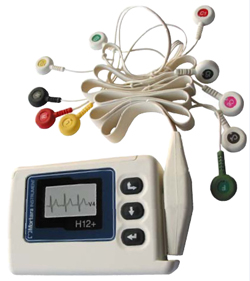A Holter monitor is a device that gives a 24-hour recording of the electrical activity of the heart. The monitor is used as a diagnostic tool to record the rate and rhythm of the heart.
Irregularities in heart beat, such as fast heart rate, slow heart rate and abnormal rhythms of the heart will be recorded.
Because many irregularities that occur in heart rate or rhythm may not be present at all times, a standard electrocardiogram (EKG) may not record them.
By recording the heart rate and rhythm continuously for 24 hours throughout different activity levels of a patient there is a greater chance of detecting abnormalities.
The Holter monitor is placed on the patient by an experienced technician or physician. Five electrode patches (with wires) are attached to the patient’s chest.
The electrodes are like EKG patches and make it possible to record the heart’s electrical activity. The wires are attached to a tape recorder that is worn for 24 hours on a belt around the waist or on a shoulder strap.
The patient is able to remove the Holter monitor after the 24 hour period or return to the physician’s office for removal of the monitor.
A patient may be asked to keep a record of activities on the day that the monitor is attached, especially recording any symptoms that develop that are suspected of being a heart rhythm problem.
Your physician will be able to answer more detailed questions.
